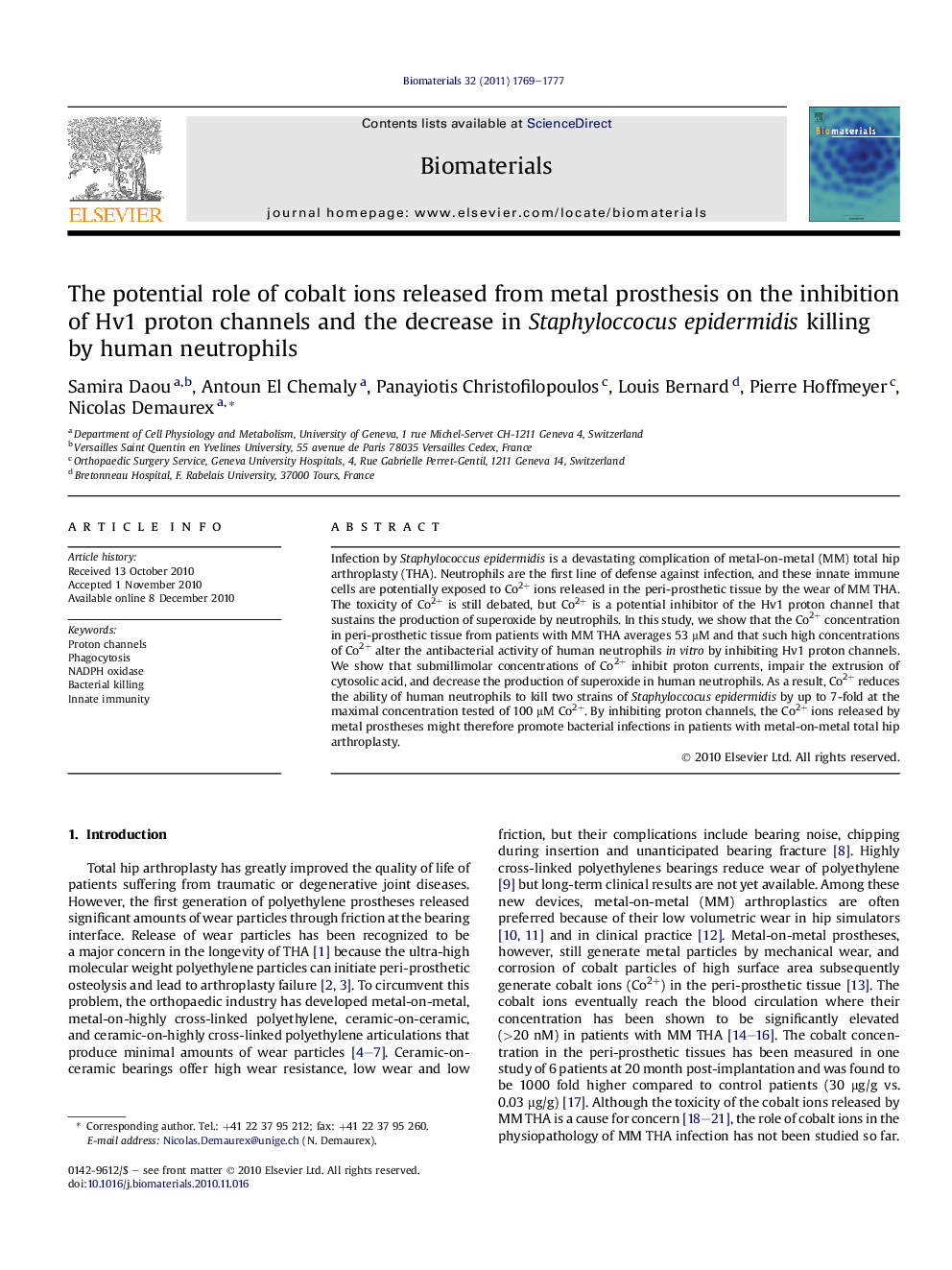| کد مقاله | کد نشریه | سال انتشار | مقاله انگلیسی | نسخه تمام متن |
|---|---|---|---|---|
| 8150 | 579 | 2011 | 9 صفحه PDF | دانلود رایگان |

Infection by Staphylococcus epidermidis is a devastating complication of metal-on-metal (MM) total hip arthroplasty (THA). Neutrophils are the first line of defense against infection, and these innate immune cells are potentially exposed to Co2+ ions released in the peri-prosthetic tissue by the wear of MM THA. The toxicity of Co2+ is still debated, but Co2+ is a potential inhibitor of the Hv1 proton channel that sustains the production of superoxide by neutrophils. In this study, we show that the Co2+ concentration in peri-prosthetic tissue from patients with MM THA averages 53 μM and that such high concentrations of Co2+ alter the antibacterial activity of human neutrophils in vitro by inhibiting Hv1 proton channels. We show that submillimolar concentrations of Co2+ inhibit proton currents, impair the extrusion of cytosolic acid, and decrease the production of superoxide in human neutrophils. As a result, Co2+ reduces the ability of human neutrophils to kill two strains of Staphyloccocus epidermidis by up to 7-fold at the maximal concentration tested of 100 μM Co2+. By inhibiting proton channels, the Co2+ ions released by metal prostheses might therefore promote bacterial infections in patients with metal-on-metal total hip arthroplasty.
Journal: Biomaterials - Volume 32, Issue 7, March 2011, Pages 1769–1777